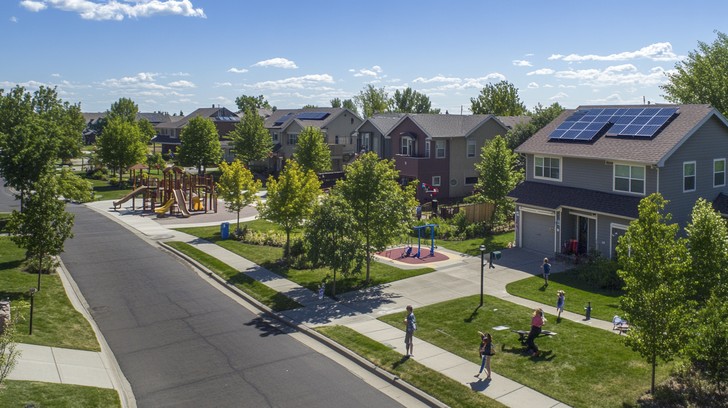
LEED Certification Explained: A Guide to Building Sustainability
In the realm of architecture and construction, the pursuit of sustainability has gained significant momentum. At the forefront of this movement is the LEED certification, a globally recognized symbol of excellence in green building. But what exactly is LEED certification, and why is it so important? In this article, we will delve into the LEED certification explained process, shedding light on its significance and how it impacts the world of construction and design.

What is LEED Certification?
LEED, which stands for Leadership in Energy and Environmental Design, is a comprehensive framework for identifying and implementing practical and measurable green building design, construction, operations, and maintenance solutions. Developed by the U.S. Green Building Council (USGBC), it is used worldwide to promote sustainable building practices.
The Importance of LEED Certification
LEED certification is more than just a badge of honor. It represents a commitment to environmental stewardship and resource efficiency. Buildings that achieve LEED certification meet stringent standards for energy use, lighting, water, and material use, as well as incorporating a variety of other sustainable strategies.
Environmental Benefits
LEED-certified buildings are designed to reduce waste, conserve energy, and decrease water consumption, thus significantly lowering their environmental impact. This not only benefits the planet but also enhances the health and well-being of the occupants.
Economic Advantages
Investing in LEED certification can lead to substantial cost savings over the life of a building. By improving energy efficiency and reducing water usage, these buildings lower utility bills and operational costs.
Understanding the LEED Rating System
The LEED rating system is structured to provide a comprehensive understanding of a building’s sustainability. It is divided into several categories, each focusing on different aspects of building sustainability.
LEED Categories
The main categories include Sustainable Sites, Water Efficiency, Energy and Atmosphere, Materials and Resources, Indoor Environmental Quality, Innovation, and Regional Priority. Each category offers a set of credit points that contribute to the overall LEED score.
LEED Certification Levels
There are four levels of LEED certification: Certified, Silver, Gold, and Platinum. The level of certification depends on the number of points a building earns across these categories.
How to Achieve LEED Certification
Achieving LEED certification involves a series of steps that require careful planning and execution. Heres a brief overview of the process:
1. Register Your Project
The first step in the LEED certification process is to register your project with the USGBC. This involves selecting the appropriate LEED rating system and paying a registration fee.
2. Implement Sustainable Strategies
Once registered, the next step is to implement the sustainable strategies outlined in the chosen LEED rating system. This includes everything from site selection and design to construction practices and operational maintenance.
3. Submit Documentation
After implementing the necessary strategies, you must compile documentation demonstrating compliance with LEED standards. This documentation is then submitted for review.
4. Certification Review
The USGBC reviews the submitted documentation to verify that all LEED requirements have been met. If successful, the building is awarded the LEED certification level it qualifies for.
Case Studies of LEED-Certified Buildings
To understand the impact of LEED certification, let’s look at some real-world examples of LEED-certified buildings. These case studies highlight the environmental and economic benefits achieved through sustainable building practices.
Case Study 1: The Green Tower
The Green Tower, a high-rise office building, achieved LEED Gold certification by incorporating energy-efficient lighting systems, water-saving fixtures, and sustainable materials. The building’s design not only reduced its carbon footprint but also created a healthier work environment for employees.
Case Study 2: Eco-Friendly Residential Complex
This residential complex earned LEED Platinum certification by using renewable energy sources, implementing a rainwater harvesting system, and maximizing natural light. The project resulted in significant energy savings and provided residents with a comfortable and sustainable living space.

FAQs about LEED Certification
What are the benefits of LEED certification?
LEED certification provides numerous benefits, including reduced energy costs, improved indoor air quality, and increased property value. It also demonstrates a commitment to environmental responsibility.
How long does the LEED certification process take?
The duration of the LEED certification process varies depending on the project’s scope and complexity. On average, it can take several months to a year to complete.
Is LEED certification only applicable to new buildings?
No, LEED certification can be applied to both new and existing buildings. There are specific LEED rating systems designed for different types of projects.
For more insights on sustainable housing solutions, you can explore an article on resilient and regenerative sustainable urban housing.
Additionally, you can check out affordable housing designs and success stories for further understanding of sustainable building practices.
This article contains affiliate links. We may earn a commission at no extra cost to you.